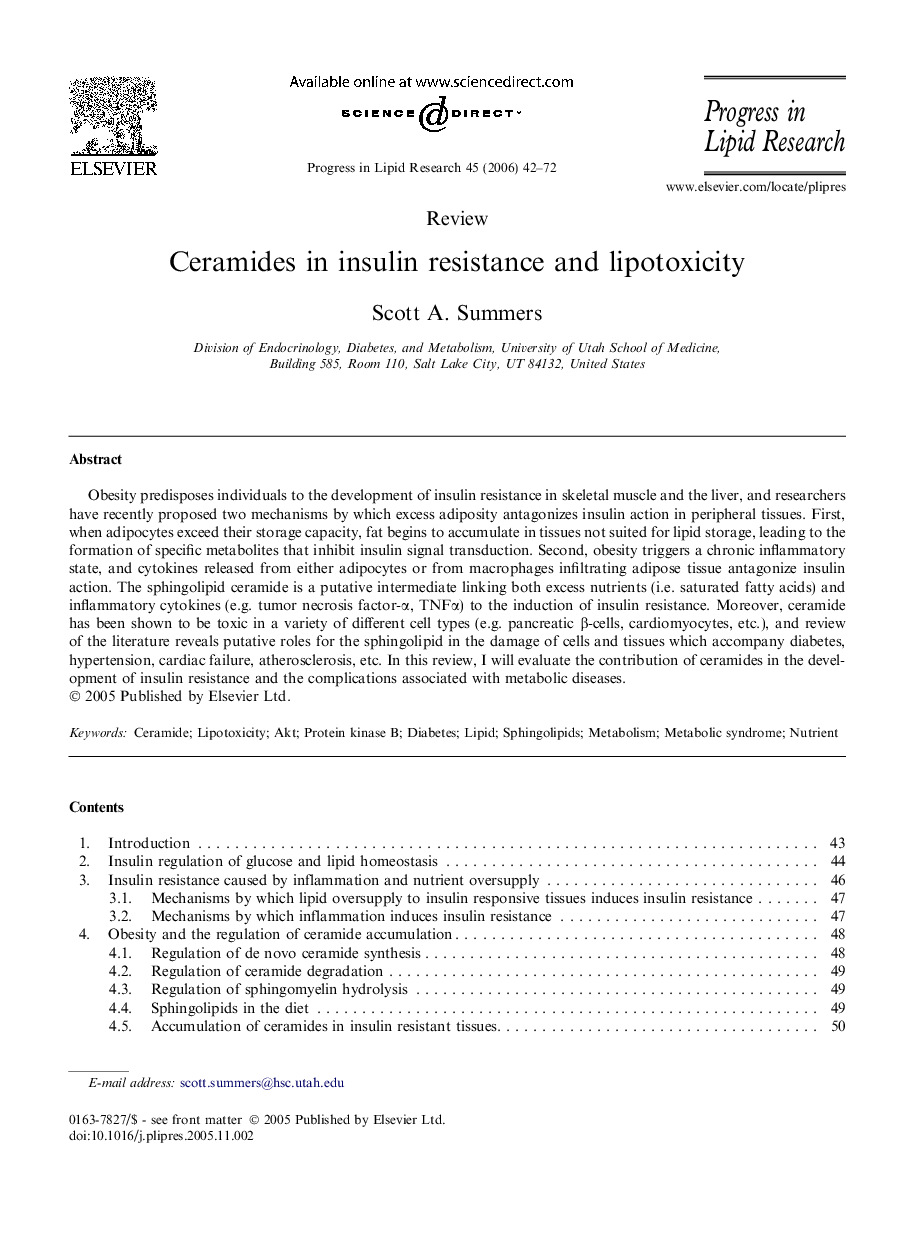| کد مقاله | کد نشریه | سال انتشار | مقاله انگلیسی | نسخه تمام متن |
|---|---|---|---|---|
| 2019367 | 1068589 | 2006 | 31 صفحه PDF | دانلود رایگان |

Obesity predisposes individuals to the development of insulin resistance in skeletal muscle and the liver, and researchers have recently proposed two mechanisms by which excess adiposity antagonizes insulin action in peripheral tissues. First, when adipocytes exceed their storage capacity, fat begins to accumulate in tissues not suited for lipid storage, leading to the formation of specific metabolites that inhibit insulin signal transduction. Second, obesity triggers a chronic inflammatory state, and cytokines released from either adipocytes or from macrophages infiltrating adipose tissue antagonize insulin action. The sphingolipid ceramide is a putative intermediate linking both excess nutrients (i.e. saturated fatty acids) and inflammatory cytokines (e.g. tumor necrosis factor-α, TNFα) to the induction of insulin resistance. Moreover, ceramide has been shown to be toxic in a variety of different cell types (e.g. pancreatic β-cells, cardiomyocytes, etc.), and review of the literature reveals putative roles for the sphingolipid in the damage of cells and tissues which accompany diabetes, hypertension, cardiac failure, atherosclerosis, etc. In this review, I will evaluate the contribution of ceramides in the development of insulin resistance and the complications associated with metabolic diseases.
Journal: Progress in Lipid Research - Volume 45, Issue 1, January 2006, Pages 42–72